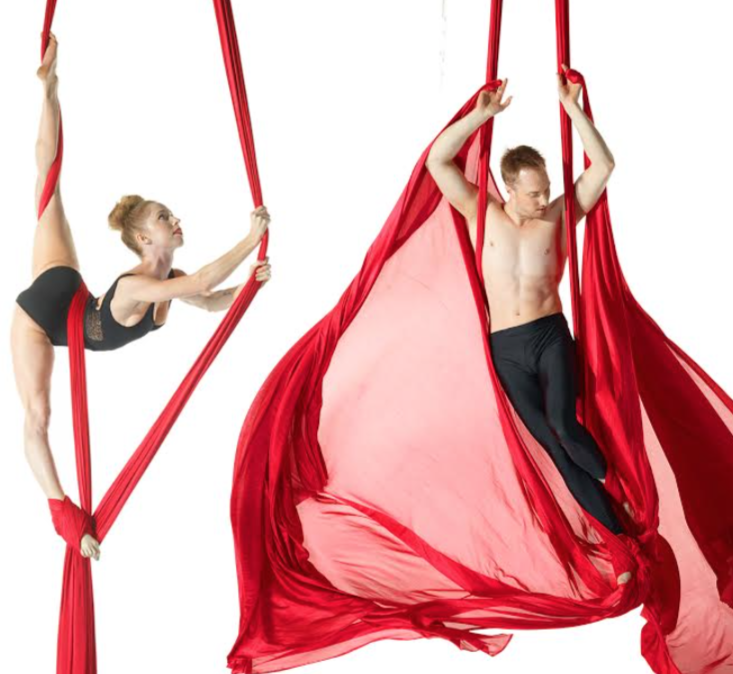As Winter sets in and the temperature in most aerial studios (or outdoor training spaces) begins to drop, the risk of injury and illness increases.
Not all of us are lucky enough to train in a temperature-controlled environment right now often due to the large studio space and high ceiling height needed for aerial arts.
There are some benefits though to training aerial in a colder environment.
Changes in temperature and air quality strengthen the immune system so you can even benefit from them!
Also, the body counteracts the cold with an increased pulse rate (thermoregulation), which increases energy consumption immensely, making training even more efficient and calorie burning (bonus!).
The cooler temperature also provides the added benefit of less sweat which means less fabric burns and slippery hands!
It IS important however that you follow a few rules when training aerial in the cold, because there are risks involved.
1. Invest more time in your warm-up!
Just as with a car, the body also takes longer to warm up in Winter. A cold start can result in injury, since training without an adequate warm-up can lead to shock in muscles, tendons, ligaments and joints.
Get to class early and get moving with some light skipping, Jumping Jacks or on the spot jogging to get the body warm.
If you are training on an outdoor rig, warm up inside where it is warm if possible.
2. Keep moving!
Just as important as proper preparation is the way you go about completing your class or aerial training. Once class is over, cool down for a few minutes with some aerial specific stretches (if you are unsure what stretches to do, ask you coach for guidance), so that your muscles do not become stiff.
In cold weather, muscles cool down very quickly, so any by-products from contraction can not be flushed out of the bloodstream in time. This results in painful muscle spasms and even injury if they are later “torn apart”. If you push hard at the end of your class or training session by running an act or conditioning intensely, make sure you don’t sit or lie down immediately after reaching exhaustion – this will cause circulation to drop very fast and your muscles will stiffen.
3. Dress warmly!
The fact that Winter aerial training requires warm clothing should be pretty obvious. It is is easy, however to underestimate temperatures, especially if you’ve spent the day working from home in your PJ’s with the heat blasting ahead of going to the aerial studio or rig.
Dressing for the cold is best done according to the well-known “onion principle”, which suggests you dress in easy-to-remove layers to allow for changes in body temperature. A long sleeved Unitard under a sweater as well as socks that can be removed after warming up for example. Be sure to wear enough layers and that the extremities are covered since they radiate a large amount of heat.
4. Eat plenty of fruits and vegetables!
Support your immune system with a balanced, vitamin and mineral rich diet. Any form of root vegetables, all types of cabbage and winter salads such as lettuce, chicory or radicchio are all great choices and easy to come by this time of year. Winter fruit like tangerines, pomegranates and all-season varieties like pears and apples provide you with an extra dose of vitamins to help make you resistant to the cold.
Stay warm, healthy and injury free this season by taking care of your body and training smart!







